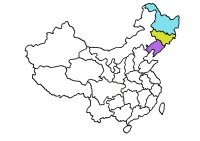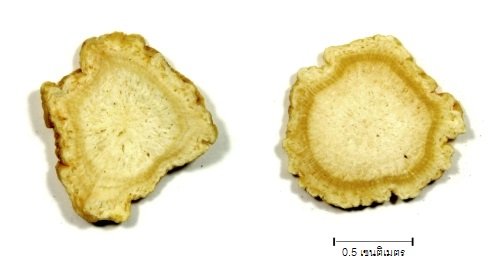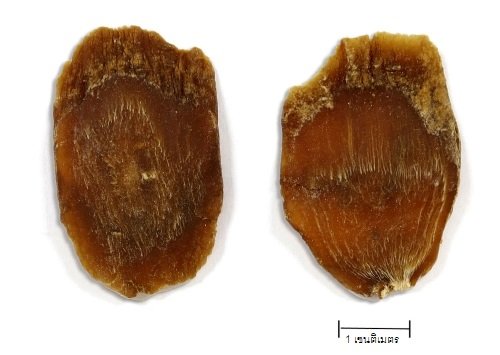Last updated: 2 ก.ค. 2567 | 17948 จำนวนผู้เข้าชม |

เหรินเซิน (人参) คือ รากและลำต้นใต้ดินแห้งของพืชที่มีชื่อวิทยาศาสตร์ว่า Panax ginseng C. A. Mey. วงศ์ Araliaceae
ชื่ออื่น ๆ โสมคน (ไทย) เหรินเซิน (จีนกลาง) หยิ่งเซียม (จีนแต้จิ๋ว) Ginseng, Ginseng Root, Ginseng Radix et Rhizoma
ลักษณะภายนอก
รากแก้วเป็นรูปกระสวยหรือทรงกระบอก ผิวสีเหลืองอมเทา ส่วนบนมีร่องตื้นตามแนวขวางเป็นช่วง ๆ และมีรอยย่นตามแนวยาวชัดเจน ส่วนล่างพบรากแขนง 2-3 ราก และพบรากฝอยยาวขนาดเล็กจำนวนมาก ส่วนลำต้นใต้ดินหรือ หลูโถว มักอัดแน่นและโค้งงอ พบรอยรากพิเศษและรอยลำต้นเล็ก ๆ บุ๋มลงไป เนื้อค่อนข้างแข็ง หน้าตัดสีขาวอมเหลืองอ่อน เนื้อแป้ง มีจุดสีน้ำตาลอมเหลืองของท่อชันน้ำมัน และมีรอยแตกเป็นรัศมี เหรินเซินมีกลิ่นหอมเฉพาะตัว รสขมเล็กน้อย และหวานชุ่มคอ

แหล่งผลิตที่สำคัญ
มณฑลจี๋หลิน เหลียวหนิง เฮย์หลงเจียง

การเตรียมอิ่นเพี่ยน
1. เซิงไซ่เซิน : แช่น้ำให้นิ่ม หั่นเป็นแผ่นบาง ทำให้แห้ง

2. หงเซิน : ล้างน้ำให้สะอาด นำไปนึ่ง หั่นเป็นแผ่นหนา แล้วทำให้แห้ง

ฤทธิ์ของยาตามภูมิปัญญาการแพทย์แผนจีน
มีรสหวาน ขมเล็กน้อย อุ่นเล็กน้อย เข้าสู่เส้นลมปราณม้าม ปอด หัวใจ และไต
1. เหรินเซิน : บำรุงหยวนชี่ได้ดีมาก บำรุงม้ามและปอด เสริมสารจินบำรุงเลือด สงบจิตใจและบำรุงสมอง
2. เซิงไซ่เซิน : บำรุงชี่ได้ดี เสริมสารจิน บำรุงม้ามและปอด
3. หงเซิน : อุ่น บำรุงหยวนชี่ได้ดีมาก บำรุงชี่เพื่อควบคุมเลือด
ขนาดและวิธีใช้ 3-9 กรัม ต้มแยกจากตัวยาอื่น แล้วจึงนำไปผสมกับยาที่ต้มเสร็จ หรือบดเป็นผงรับประทานครั้งละ 2 กรัม วันละ 2 ครั้ง
* ข้อห้ามใช้ ข้อควรระวังในการใช้ *
ไม่ควรใช้ร่วมกับหลีหลู (藜芦) และ อู่หลิงจือ (五灵脂)
เอกสารนี้เป็นลิขสิทธิ์และทรัพย์สินทางปัญญาของคลินิกหัวเฉียวแผนแพทย์จีน
ใช้เผยแพร่เพื่อเป็นวิทยาทานความรู้แก่ประชาชน
ห้ามคัดลอกในเชิงพาณิชย์โดยไม่ได้รับอนุญาตทุกกรณี
19 ก.พ. 2567
23 เม.ย 2567